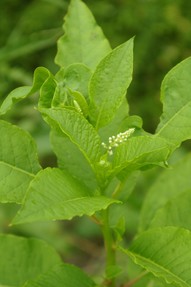 The word "poke" is from the Algonquian Indian word "pakon" or "puccoon," which refers to a dye plant used for staining.
The word "poke" is from the Algonquian Indian word "pakon" or "puccoon," which refers to a dye plant used for staining.
The Mohegan Indians mashed pokeberries into a poultice to relieve breast pain. The Delaware Indians used poke root teas and poultices to relieve joint pain.
Long ago, American colonists used pokeberries for ink. It's a rich purple color when fresh, but eventually it fades to tan. Thomas Jefferson wrote the Declaration of Independence with pokeberry ink. Even after all this time, the text is still legible.
During the US Civil War, soldiers wrote letters using a bird feather and pokeberry juice. These letters, too, are still legible.
During the early part of the nineteenth century, American doctors used pokeroot as a topical treatment for cancer, applied to areas of the skin where cancer was visible.
Poke is sometimes spelled "polk". Supporters of President James Polk, wore pokeweed twigs during their candidate's election campaign. They thought (mistakenly) that the plant was named for him.
After the Civil War, pokeroot was often used internally for arthritis and skin conditions. Pokeroot was believed to relieve constipation, and it was used to induce vomiting to treat certain kinds of poisoning. In the 1890s, Dr. W. W. Baxter even made one of the first "diet pills" from pokeberries.
NOTE: This photo is of pokeweed when it's beginning to make berries, which would be in late summer. The plant is too mature to eat - you should only eat poke in early spring.


 The word "poke" is from the Algonquian Indian word "pakon" or "puccoon," which refers to a dye plant used for staining.
The word "poke" is from the Algonquian Indian word "pakon" or "puccoon," which refers to a dye plant used for staining.


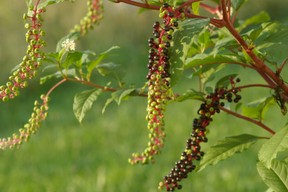
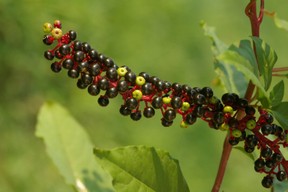 If you have pokeweed plants close to your house or where you park your car, you may want to cut them down, because the droppings will be purple.
If you have pokeweed plants close to your house or where you park your car, you may want to cut them down, because the droppings will be purple.


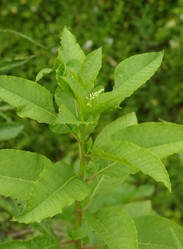

 I Loved to Read in Grade School (in the 1960s)on 09/29/2018
I Loved to Read in Grade School (in the 1960s)on 09/29/2018
 Halloween Memories from the 1960son 09/17/2018
Halloween Memories from the 1960son 09/17/2018
 What on Earth is Earthing?on 06/03/2015
What on Earth is Earthing?on 06/03/2015
 Worm Manure (Castings) Is The Best Organic Fertilizeron 05/25/2015
Worm Manure (Castings) Is The Best Organic Fertilizeron 05/25/2015

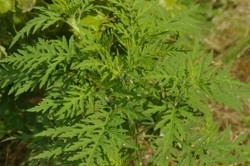
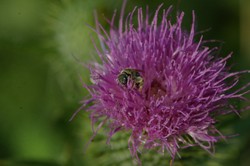
Comments
cazort - I live in an apartment, but if I ever live in my own home, I'm not going to have a traditional lawn. Like you, I'd have native plants, especially ones I can eat.
I am actually rather fond of this plant, but I've never tried it as food. My mom is from Arkansas, and talks about people eating it, but she never has cooked it up.
More recently, I started gardening and landscaping with all-native plants, as a means of restoring and protecting the ecosystems in my area. Since pokeweed is native, I've been leaving it in the wild portions on the edge of my yard, although it is an aggressive plants so I do pull it out of the flower beds and places where I plant my food plants.
I actually find this plant very visually attractive, and I think it's a bit silly how people view it as a weed. It has a sort of exotic appearance, with the sprawling purplish stems, and a neat shape. Its flowers are somewhat showy, and attract bees, and the purple berries add a lot of color in late summer to fall. It seems to be good at attracting birds too; I've seen mockingbirds and cedar waxwings eating the berries.